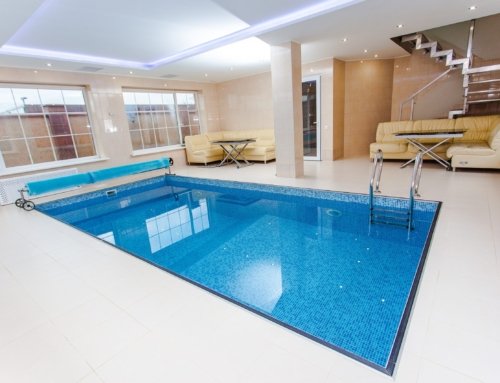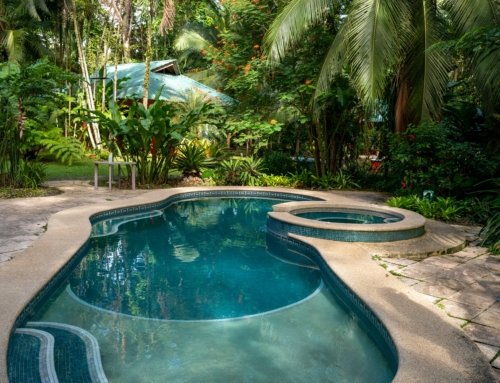The Five Most Important Advantages Of Fibreglass Swimming Pools That Make Them Superior To Other Types In Every Way
Fewer Chemicals Are Required To Maintain A Fibreglass Pool.
Maintaining a fibreglass pool requires less effort than other types. The question arises as to why this is not the case.
The Heating Of Fibreglass Pools Requires Less Energy.
The heating of fibreglass pools requires less energy.
From the point of view of the cost of ownership as a whole, this is without a doubt the best thing about a fibreglass pool. Every year, we talk to customers who have a vinyl or plaster pool but are thinking about switching to a fibreglass pool because the cost of heating their existing pool is more than the cost of tearing down their existing pool and building a fibreglass pool. Many people do not swim as frequently as they would like, simply because the water temperature in their pools is lower than they would like.
Let me explain: you can easily compare the cost of heating a fibreglass pool to that of heating a vinyl or concrete pool by using a simple formula. Both vinyl-lined pools and concrete pools have the same heating qualities. Vinyl pools are really just a thin liner on top of the soil, and this liner has zero insulating capabilities. Concrete pools are just composed of hard soil. In contrast, fibreglass was first developed as an insulator, and as a result, it has far better capabilities regarding the preservation of heat.
The original pool’s owner had a heater with a capacity of 450,000 BTU, and the process of heating the water would take three full days, or 72 hours.
We were able to heat the new fibreglass pool in just 8 hours thanks to the 150,000 BTU heater that we had placed in it.
Because the old heater was three times as big and took nine times as long to heat the pool, it’s easy to see that the new fibreglass pool only needs one-twentieth as much energy to do the same job. When we take into account the fact that the first pool had fifty percent more water, we see that the amount of energy required to heat water of that volume is only one eighteenth of the total.
In terms of dollars and cents, what does this mean exactly?
In light of the fact that one gallon of propane contains about 91,500 BTUs, it follows that operating a heater with a rating of 450,000 BTUs will require 4.92 gallons of propane every hour.
In the current world, it took three days (or 72 hours) to heat the old vinyl pool to the homeowner’s ideal swimming temperature of 83 degrees, which was at a temperature of 65 degrees. Because of this, 4.92 gallons of propane were consumed each hour for a period of 72 hours, which equals a total consumption of 354 gallons of propane.
After making the pool out of fibreglass and doing the same experiment every year since then, we now have enough data from the past seven years to make solid conclusions.
When we heat the same space, it takes us eight hours to do so with a heater that has 150,000 BTUs, which results in the use of 1.64 gallons of water each hour, for a total of 13 gallons.
According to data published by NYSERDA on March 11, 2016, the average price of gas was $6 per mj during the month of February 2016. This indicates that the cost to heat the fibreglass pool would be $30.42, whereas the cost to heat the vinyl pool would be $828.36. Not to mention the fact that in order to heat the vinyl pool, it required three days of operating the pump nonstop. Taking into account the difference in size between the pools, the cost of heating a vinyl or concrete pool of the same size would be $547.56 and it would take two days to do so.
So, what exactly does all of this imply when applied to the current world? It means that a vinyl or concrete pool is usually not heated because it is too expensive and takes too much time to do so. It’s true that some individuals have a heater, but who really wants to fork out that sort of cash to keep one of these pools warm? On the other hand, fibreglass pools are It It is extremely simple to heat them after the sun has warmed them up a bit. All it takes is an additional hour or two of heating for less than ten dollars.
Which of these two options would you prefer: a pool that is warm enough to swim in or one that is freezing?
Maintaining a fibreglass pool requires less effort than other types.
Both vinyl and concrete swimming pools require a significant amount of upkeep. I could stop there, but then you would not fully get the implications of what this means.
You have to understand that, in comparison to fibreglass pools, these ones need significantly more upkeep and attention. Things that would ruin a liner or a concrete pool are no problem at all for fibreglass pools since they are impervious to damage. If you don’t get the chemical balance right on a vinyl or liner pool, you might be looking at some expensive repairs down the road.
Even if an error in chemical dosing may cause a liner to fade or a concrete shell to crumble, a fibreglass shell can absorb a hammering like that and continue to function normally. In the petrochemical and oil industries, fibreglass containers are sometimes used as storage vessels.
In contrast to their concrete analogues, fibreglass pools will never require resurfacing, and unlike vinyl pools, they won’t ever require new liners either. Not only do parts that need to be fixed cause a lot of downtime, but they can also be quite expensive. The pool liner had only been in use for a year when a limb from a nearby tree broke off and fell into the pool during the winter. A repair like this can cost anywhere from $6,000 to $8,000, and the exact amount will depend on the size of the pool as well as the degree of damage done to the structure that lies beneath the liner.
A plaster pool like the one you see here is going to have its surface redone. This process needs to be done about once every ten years and can cost anywhere from $25,000 to $30,000 or even more, depending on how much damage there is to the structure and how big the pool is.
As can plainly be seen, this kind of pool upkeep is not for those who are easily discouraged.
Pools made of fibreglass are installed quicker, too. This one really is as easy as it seems to be. A swimming pool can be renovated by our team in as little as one week. This is something that can’t be said about any other kind of swimming pool. The majority of dealers who renovate vinyl liner pools take up to one month, while contractors who renovate plaster pools can easily take two months.





